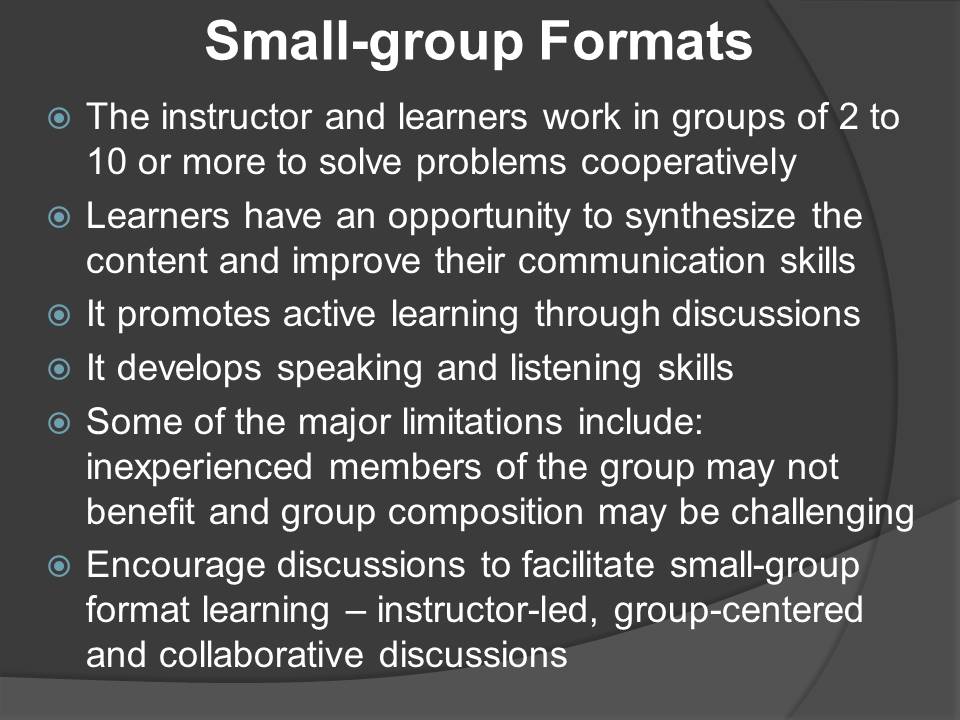Heuristics for Developing Instruction
Stay focused when solving the performance issues.
Define objectives that support the resolution of the instructional design.
Conduct learner analysis and background reviews to assist in determining the appropriate reading level and the learners’ familiarity with the content and technical terms.
In heuristic approach, learners discover something new, learn what works and modify existing heuristic.
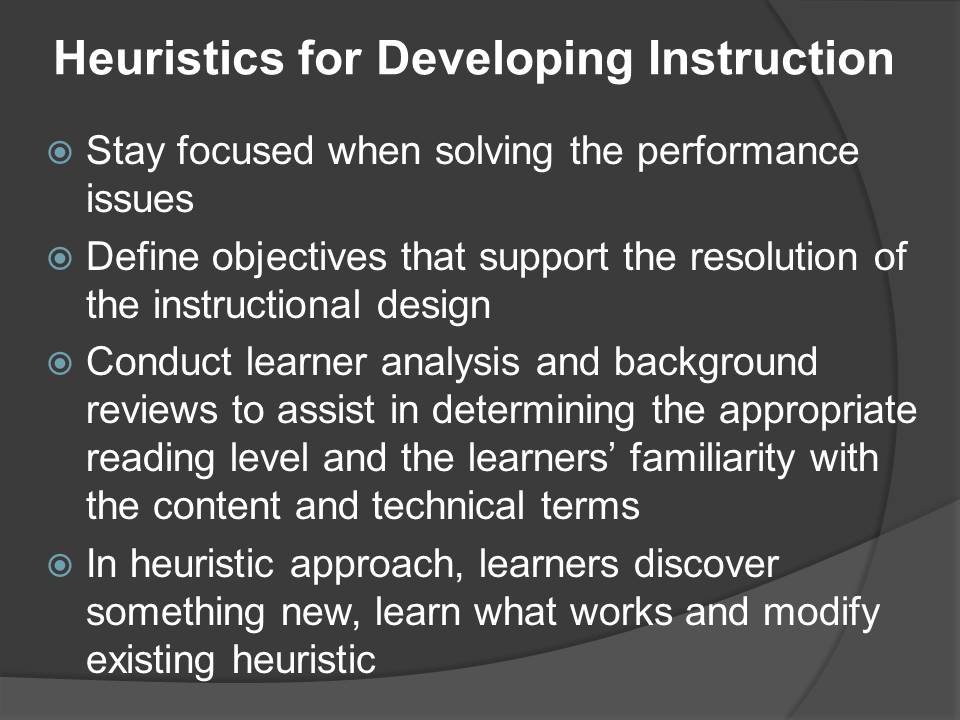
Heuristics
- Make it concrete – concrete words create mental images for learners i.e., avoid abstract words.
- Make text concrete through illustrations, use of concrete words, shorter words and active sentences and use ample examples to illustrate the ideas.
- Control the step size by using consistent terminology and explicit references.
- Use Appropriate Pacing by varying the number of examples and/or problems in the instruction.
- Maintain consistency throughout a unit to aid learner understanding.
- Use essential cues to make the process easier.
- Develop pre-instructional strategy such as overview, pretest, objectives or advance organizer.
- The initial presentation should offer information needed to achieve the objective.
- Use generative strategy to create an active learning opportunity for the learner.
- Apply transitions to reduce the step size, or jump from one idea to the next.
- Consider cognitive load to enhance the learning process.
- Intrinsic load relates to the interactivity of the elements of the content while extraneous cognitive load are introduced to the design or layout of the instructional materials.
- Apply Goal-Free Effect to identify the known and solve problems.
- Worked-Example Effect to enhance learning.
- Use Split-Attention Effect by integrating the text and graphics to prevent extraneous cognitive load.
- Avoid repeating the same information in both the illustration and text to eliminate redundancy.
- Learn to take a load off the learner’s mind by reducing the abundance of irrelevant information.
- Help the learner to comprehend by ensuring that the learner is can attend to critical elements of the presented material, mentally arrange it into a coherent cognitive schema and integrate it with relevant existing knowledge.
- Organize learning tasks in a simple-to-complex sequence to task classes.
- Adopt a timing strategy for supportive and prerequisite information.
- Use part-task practice to automate consistent skills.
- Provide learner support.
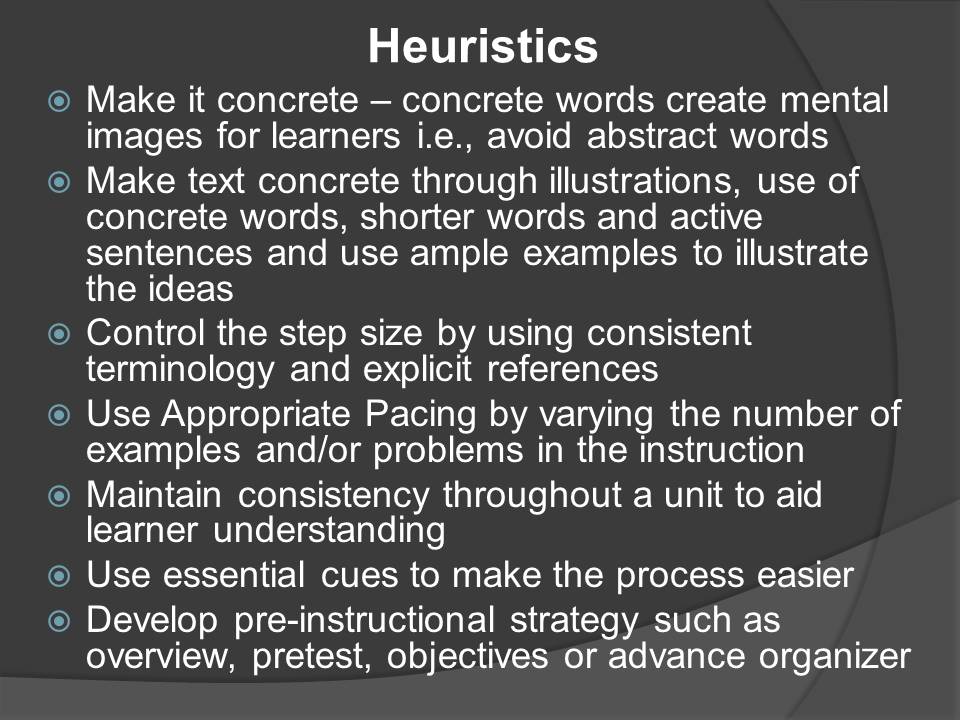
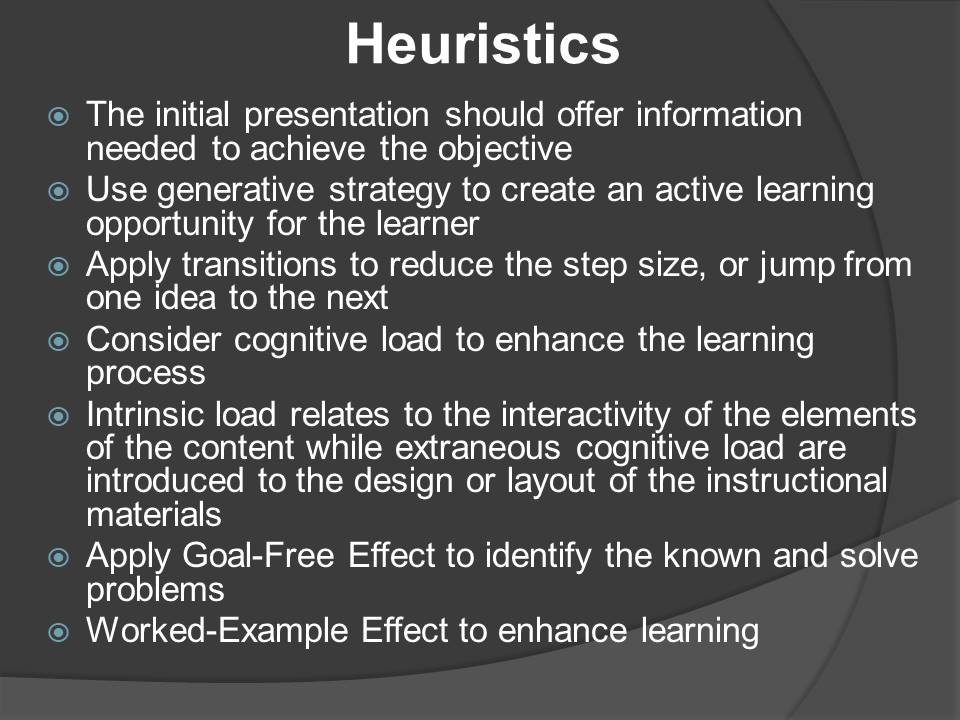

Group Presentations (Lectures)
- The instructor will tell, demonstrates, dramatizes, or otherwise disseminates subject content to a group of learners.
- It is applicable in various locations and situations.
- The method is familiar to the instructor and learners.
- Easy to design and gives the instructor authority over the class.
- The drawbacks include passive learning, must be interesting to sustain learners’ attention, difficult to get individual feedback, not appropriate for psychomotor and affective learning.
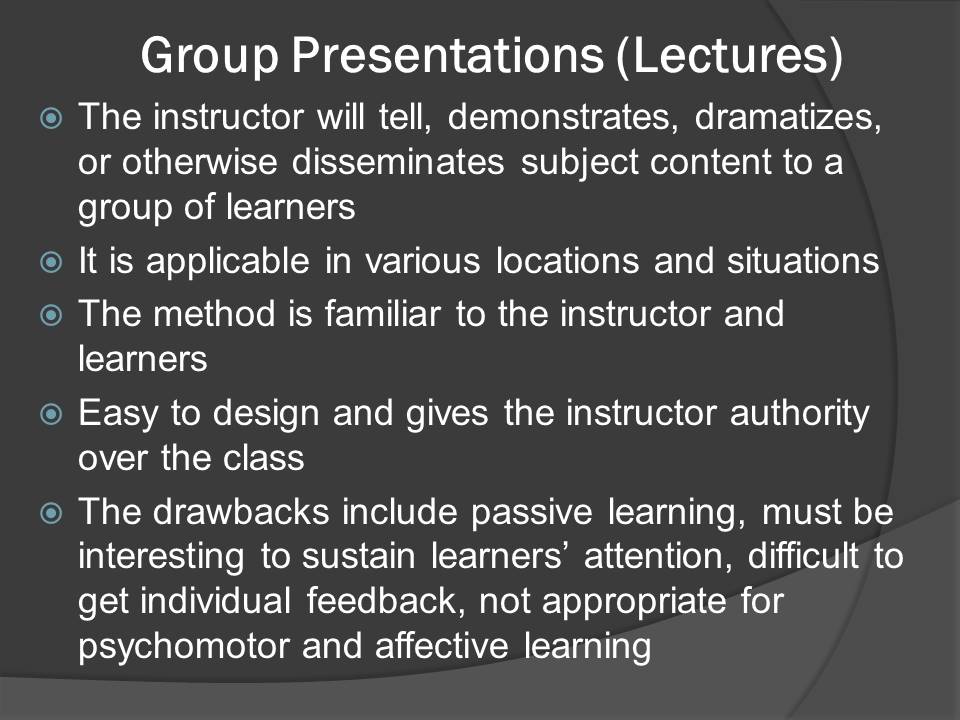
Guidelines for Effective Lecturing
- Encourage active learning processes.
- Active interaction with the instructor, including class discussions.
- Encourage note taking.
- Provide handouts.
- Encourage thinking and other mental activity through active rhetoric, direct questions.
- Explain terminologies.
- Present organized contents and standard formats.
- Show enthusiasm and interest about the subject.
- Review and preview contents.
- Distance education and virtual learning have benefited from effective instructional designs.
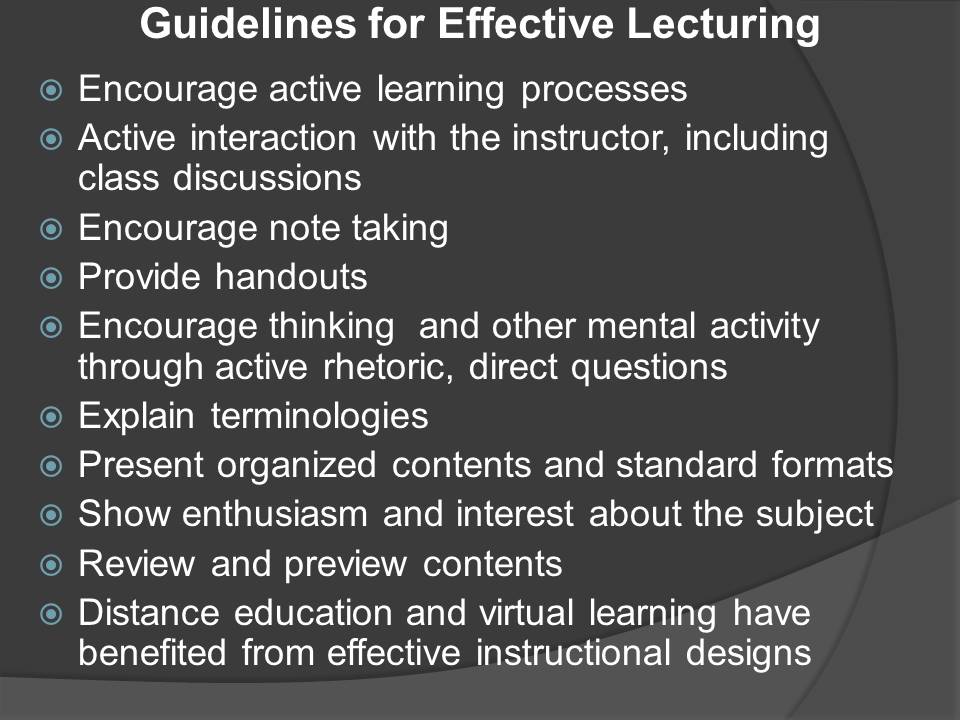
Self-paced /Individualized/Self-instruction Learning
- The main assumption is that optimum learning occur when a learner works at his or her own pace, is actively involved in performing specific learning tasks, and experiences success in learning.
- Learning activities are carefully designed to benefit both slow and fast learners.
- Promotes individualized learning and learning contents consistent and self-reliance.
- The major drawbacks include a lack of interaction, learning may be not interesting, procrastination and a lack of self-discipline may affect learning outcomes.
- Promote effective learning through active instructional methods and activities.
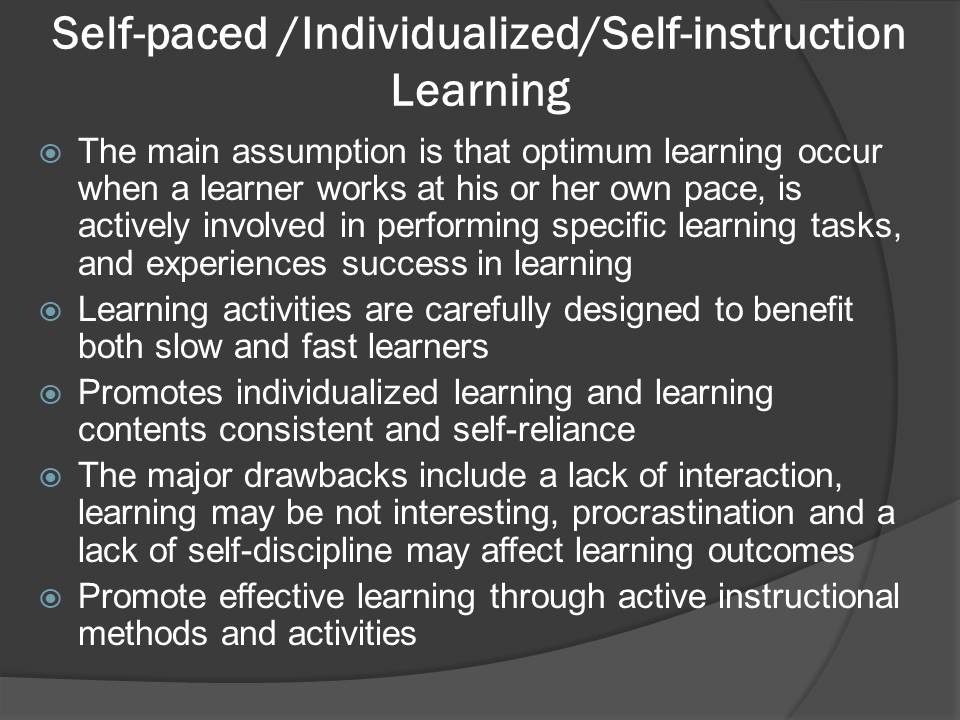
Small-group Formats
- The instructor and learners work in groups of 2 to 10 or more to solve problems cooperatively.
- Learners have an opportunity to synthesize the content and improve their communication skills.
- It promotes active learning through discussions.
- It develops speaking and listening skills.
- Some of the major limitations include: inexperienced members of the group may not benefit and group composition may be challenging.
- Encourage discussions to facilitate small-group format learning – instructor-led, group-centered and collaborative discussions.
